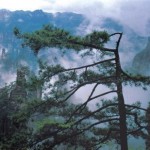Archive for the ‘Chinese Gardens’ Category
The Formation and Development of the Chinese Garden
 The garden should be a perfect blending of nature and construction by man. It should be an imitation of nature, and fully manifest the beauty of nature in limited space; it is also an improvement on nature which should show the painstaking efforts of the garden builder in every corner. The Chinese garden has concentrated man-made structures like rockery, fish ponds and all manner of pavilions together with flowers, trees, breezes and moonlight of nature, and have combined all these into an artistic entity in which man and nature can co-exist harmoniously.
The garden should be a perfect blending of nature and construction by man. It should be an imitation of nature, and fully manifest the beauty of nature in limited space; it is also an improvement on nature which should show the painstaking efforts of the garden builder in every corner. The Chinese garden has concentrated man-made structures like rockery, fish ponds and all manner of pavilions together with flowers, trees, breezes and moonlight of nature, and have combined all these into an artistic entity in which man and nature can co-exist harmoniously.
The presently preserved northern imperial gardens were primarily built in the Ming Dynasty (1368-1644) and the Qing Dynasty (1616-1911), and were places where the feudal royalty could live, enjoy walks in, throw banquets, entertain and hunt. They took up large areas of space and were equipped and decorated very lavishly. The building of these gardens required large amounts of human labor and heavy investments. The gardens of South China are concentrated mostly in cities and towns on the lower reaches of the Yangtze River, which is where scholars loved to gather since ancient times. This is also where writers and calligraphers would live in leisure so they could be close to nature, or where officials and rich merchants would show off their wealth and gamble on horses and dogs. Northern gardens are characterized by grandeur of scope, where as Southern gardens emphasize a more delicate beauty. Famous gardens are scarred all over the Chinese landscape like so many pearls, and give silent testimony to the history and culture of China.
In addition to imperial gardens and private gardens, we can also find open-style scenic areas for the pleasure of the visitor, which possess both the mountains and waters of nature, and cultural spots of interest. These scenic areas are similar in nature to parks, such as the famous five mountain ranges-the Taishan Mountains to the east, The Hengshan Mountains to the south, the Songshan Mountains on the middle plain area of China, the Huashan Mountains to the west, and the Hengshan Mountains (wrItten differently) to the north. After generations of development and management, these have already become renowned scenic park areas. And the West Lake of Hangzhou is an even more exemplifying model for gardens and parks.
Parks with temples are another lovely form of parks and gardens. The so-called “Temple Parks”refer to parks belonging or attached to Buddhist  temples, Taoist temples, altar temples or ancestral halls. The large ones are very much like imperial gardens, whereas the smaller ones resemble more the private gardens. These gardens which are interspersed in natural areas can open be found mixed with parks and gardens of a scenic nature, or are even a part of the scenic parks themselves. Some of the more renowned Temple Parks include Be?ing’s Tanzhe Temple, Jietai Temple, Taiyuan’s Jinci Temple, Suzhou’s West Garden, Hangzhou’s Lingyin Temple on the West Lake, and Chengde’s Waiba (Eight Outer) Temples.
temples, Taoist temples, altar temples or ancestral halls. The large ones are very much like imperial gardens, whereas the smaller ones resemble more the private gardens. These gardens which are interspersed in natural areas can open be found mixed with parks and gardens of a scenic nature, or are even a part of the scenic parks themselves. Some of the more renowned Temple Parks include Be?ing’s Tanzhe Temple, Jietai Temple, Taiyuan’s Jinci Temple, Suzhou’s West Garden, Hangzhou’s Lingyin Temple on the West Lake, and Chengde’s Waiba (Eight Outer) Temples.